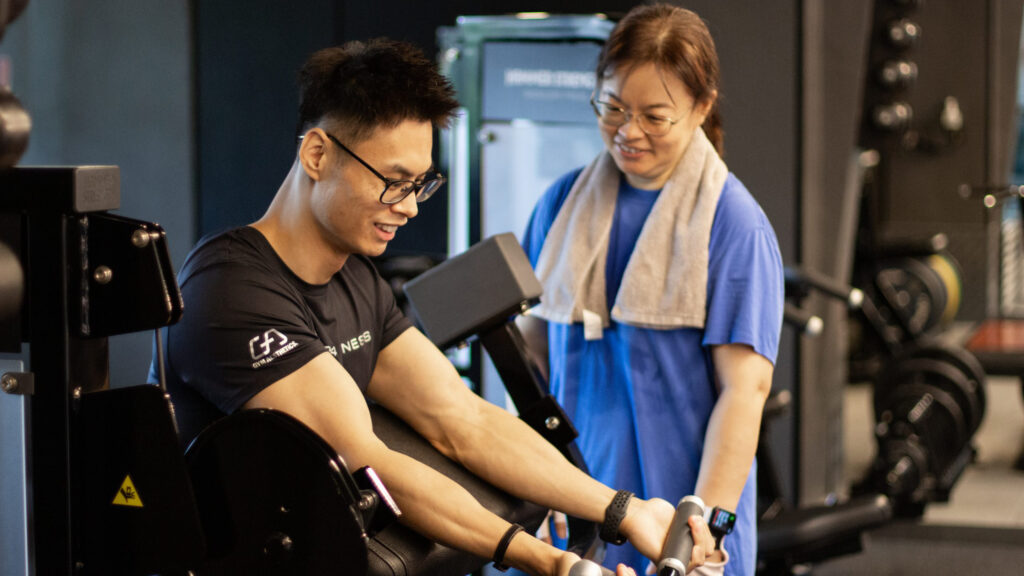
Fit for Purpose? Physical’s sudden demise spotlights a saturated gym sector in need of a work-over
The collapse of Physical Fitness, one of the stalwarts of Hong Kong’s gym industry, was a shock to many of its loyal customers and those unfamiliar with the dynamics of the industry. It has left some wondering whether there are simply too many gyms in Hong Kong and if they provide value for money.
Physical, which had operated in Hong Kong for 38 years and once boasted 23 branches, ceased trading this September after the Mandatory Provident Fund Schemes Authority demanded it settle unpaid contributions to more than 700 employees amounting to millions of dollars. The decision by the gym chain owners to close shop left staff jobless and triggered thousands of complaints to the Consumer Council over loss of membership fees. Some customers were on decade-long membership packages. There were also reports of lengthy packages sold just prior to its closure.

Given the recent upsurge in investment in the sector, Physical’s failure did not come as a shock to many gym insiders. “I can’t say that Physical going under felt like a massive surprise,” says Ed Haynes, founder and CEO of boutique gym Coastal Fitness, who also made reference to some of the “amazing” deals the chain offered just before its ignominious collapse, perhaps in a desperate bid to cut its losses.
Fall of the mighty
Haynes notes this is the fourth big commercial gym operation to shut down during the 16-year lifespan of Coastal Fitness – on the heels of California Fitness in 2016, Goji Fitness and the Hong Kong branches of international chain Fitness First. The latter two faltered amid the pandemic, which interrupted business and made the recruitment of new members almost impossible.
Certainly, many consumer discretionary sector businesses, including cafés, restaurants and cinemas as well as fitness centres, suffered financially during the Covid years. But the pandemic also had a benign influence on the fitness industry – people became worried about their health.
“In the minds of the Hong Kong public, the idea of health and exercise came to the forefront a lot more,” says Haynes. “In the pandemic, when everything closed and people were confined to their homes in their small and immediate environments, a lot of people actually started exercising.”
Gym crazy
Since then, he has witnessed a huge upswing in many forms of physical activity practised in the community, which in turn has prompted a proliferation of investment in the industry. “Because the fitness industry saw this big boom in exercise participation, low-cost 24-hour gyms started popping up everywhere. And I think that’s almost saturated that market,” he states.
From the less than 10 24-hour gyms believed to be operating in 2018, the number had ballooned to more than 110 by last year. Haynes believes too many gyms have opened up too quickly, causing supply to outpace demand. He also maintains that many of the newer gyms are soulless and lacking in a community feeling. “The way these gyms are set up is just you go in and do your hour; you’re isolated in many of them,” he opines.

The pandemic not only sparked an increase in physical activity but also a desire for community-based fitness where people can connect with each other, according to Haynes: “If you go out to any of the waterfronts right now, every morning, every night, they are packed with groups of people in running clubs, sweating, moving, having a good time.”
Cash flow precautions
He also outlines a key learning curve in the gym business from the pandemic years: the importance of maintaining cash flow through offering membership packages. More than two-thirds of the Coastal Fitness membership sign up for six or 12 months in advance, providing money in the bank. The pay-when-you-use model adopted by some of the newer gyms, by contrast, does not give owners this security.
Haynes has witnessed a rise since the pandemic in the purchase of long-term packages by clients willing to commit to regular exercise. He does caution against lengthy prepayment deals though; at Coastal Fitness 12 months is the maximum term offered.
The majority of his clients come through referrals or word of mouth, and they include people from all walks of life. Most use the North Point gym’s services at least three times a week, and all receive some type of coaching, whether through attending a group class led by a coach, having a personal training session, or by following a tailored fitness programme designed by a coach.
Operational stress
During the post-pandemic investment splurge in the gym business, John Bower took on the managerial responsibilities of a new fitness start-up in Hong Kong. As an entrepreneur who had created and sold a human resources business earlier in his career, he seemed an ideal fit to launch the venture. However, the market glut in gyms soon exacerbated the stresses of running a fledgling operation, and breaking even took longer than planned. Exhausted, he quit after two years and now freelances as a personal trainer and executive coach.
Bower believes the gym sector has been flooded with entrants and the next two years will favour the consumer. He says managers of gyms should be crystal clear what market they are going to dominate. “In the longer term, the harsh truth is that many gyms are on borrowed time and need to figure out their strategy – being number one in the local market and number 10 in Hong Kong might be fine,” he says.

Far happier working as a freelance coach, he often conducts sessions for clients at the city’s many boutique gyms. He loves the interpersonal interaction with clients and can advise on all aspects of life aside from physical training. “The value of personal training is that it enables the client to physically challenge themselves,” he says.
Market jitters
Some gym-goers may be tempted to turn to personal instruction rather than sign up for memberships as fears over the stability of the wider fitness sector mount. Recent disputes over unpaid rent at branches of Pure Fitness, an upmarket chain of fitness and yoga studios, caused jitters in the market, although the issues were quickly resolved.
Hong Kong-based lawyer and writer Sanjeev Aaron Williams chose not to join a well-known commercial gym after their sales pitch left him unclear about what the fees would cover. He now attends gyms run by the Leisure and Cultural Services Department. While available at a fraction of the price of many private gyms, these government fitness rooms have their drawbacks, says Williams, such as blackout periods restricting use and irregular availability of equipment.
Essential regulation
Williams sees a future for commercial gym operators, but calls for urgent government regulation. “Gyms in Hong Kong need to be regulated by legislation and monitoring. We are behind other countries in regulating consumer protection and gym operations,” he says. “Commercial gyms in Hong Kong have been the subject of failures and scams since the 1980s when the fitness trend began. We’ve gone over 40 years without regulated protection.”
He believes any legislation should cover the entire fitness sector including large commercial gyms, 24-hour gyms, personal training studios, personal trainers, pilates and yoga studios, boxing and martial arts gyms, as well as the classes offered at these venues.

The lawyer urges a limitation on the length of prepayments, saying they should not exceed more than two years, and calls for the implementation of a legal “cooling-off period [that] should be prominently advertised on the premises and to each customer”. He adds: “Consideration should be given to increasing criminal penalties for misleading advertising and sales tactics or carrying on business when [the operator] knew they couldn’t meet their debts.”







